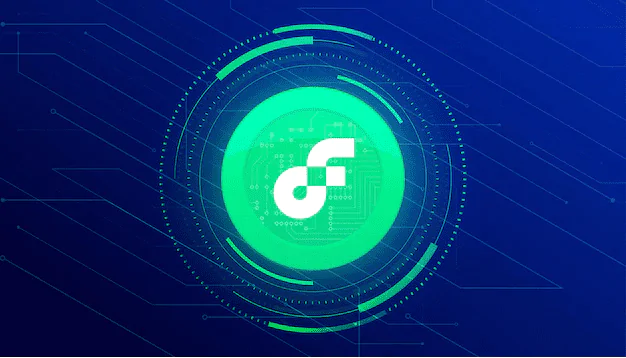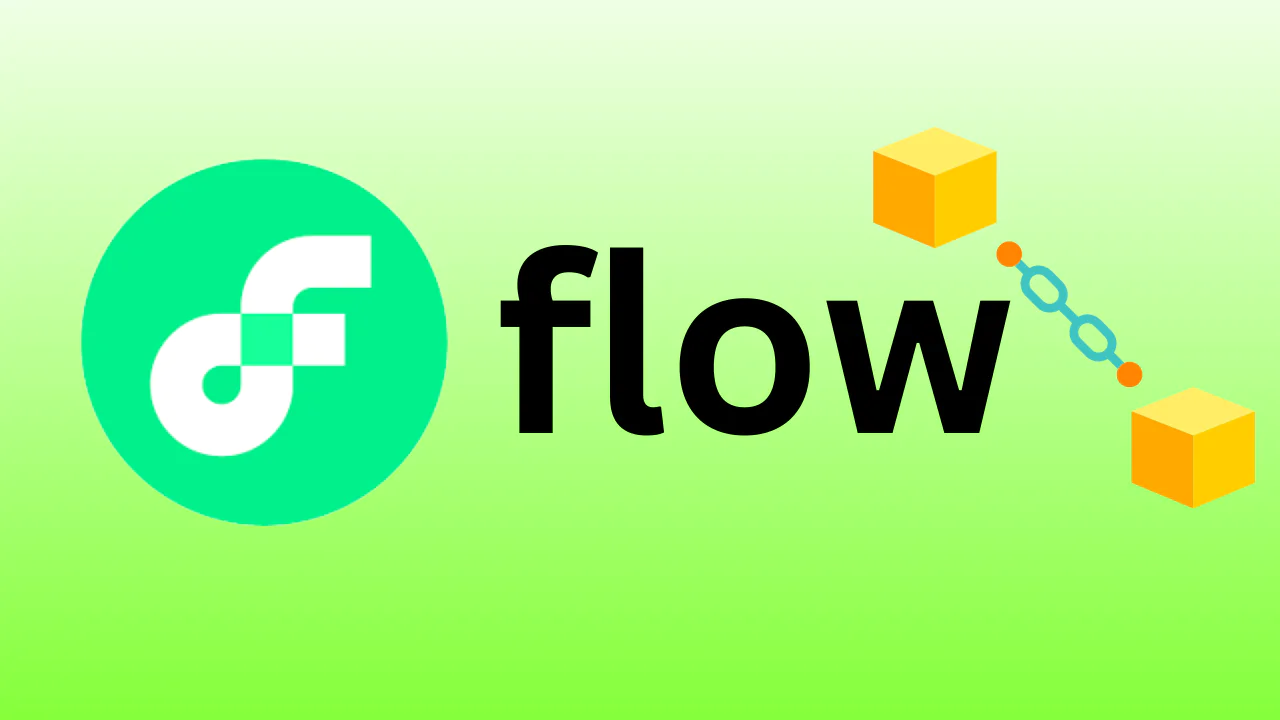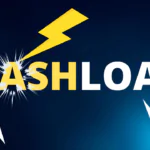Introduction
In recent years, blockchain technology has gained significant attention for its potential to revolutionize various industries. One prominent blockchain platform that has emerged is Flow Blockchain. In this blog, we will explore the intricacies of Flow Blockchain, its applications, and its impact on the decentralized application (dApp) ecosystem. So, let’s dive in and understand how Flow Blockchain is reshaping the future.
What is Flow Blockchain?
Flow Blockchain is a decentralized, fast, and developer-friendly blockchain platform specifically designed to support high-performance dApps and digital assets. Developed by Dapper Labs, the creators of CryptoKitties, Flow Blockchain aims to address the scalability limitations experienced by other blockchain networks, such as Ethereum.

The Core Principles of Flow Blockchain
Flow Blockchain is built upon three core principles:
1. Developer-Friendly Environment
Flow Blockchain provides a developer-friendly environment that simplifies the process of building decentralized applications. It offers a user-friendly interface, developer tools, and an intuitive smart contract language called Cadence. These features enable developers to focus on innovation rather than struggling with complex technicalities.
2. Scalability and Throughput
Flow Blockchain is designed to handle high transaction volumes without sacrificing speed or security. It achieves this by utilizing a unique sharding architecture called “Catenas.” Catenas enables horizontal scalability, allowing the network to process a large number of transactions in parallel.
3. Secure and Compliant
Flow Blockchain prioritizes security and compliance. It incorporates a robust consensus mechanism called “Proof of Stake (PoS),” which ensures the integrity of the network. Moreover, Flow Blockchain supports the creation of compliant dApps, making it suitable for various industries, including finance, gaming, and digital collectibles.
Key Features of Flow Blockchain
Flow Blockchain offers several key features that distinguish it from other blockchain platforms:
1. Non-Fungible Tokens (NFTs)
Flow Blockchain provides native support for non-fungible tokens, making it an ideal platform for creating, owning, and trading digital collectibles, virtual assets, and unique gaming items. The platform’s architecture ensures seamless integration and interoperability between different dApps, enabling vibrant ecosystems to thrive.
2. Cadence Smart Contract Language
Flow Blockchain introduces Cadence, a resource-oriented smart contract language. Cadence is designed to enhance security, facilitate easy contract composition, and promote clarity of code. With Cadence, developers can write expressive smart contracts, reducing the risk of vulnerabilities and enhancing overall application security.
3. Ecosystem Collaboration
Flow Blockchain encourages collaboration between developers, users, and various industry stakeholders. It offers a vibrant ecosystem with developer grants, tools, and resources to foster innovation. This collaborative approach ensures the growth and sustainability of the platform, as well as the success of dApps built on Flow.
Flow Blockchain Architecture
Flow Blockchain features a layered architecture that enables efficient transaction processing and state management. The architecture consists of the following layers:
1. Consensus Layer
The consensus layer ensures agreement among the network participants on the validity and order of transactions. Flow Blockchain utilizes the PoS consensus mechanism, where node operators who hold FLOW tokens participate in the consensus process and earn rewards for their contributions.
2. Execution Layer
The execution layer processes transactions and executes smart contracts written in Cadence. It ensures the accuracy and consistency of the state transitions within the blockchain.
3. Verification Layer
The verification layer validates the correctness and authenticity of the transactions and smart contracts. It ensures that the execution layer adheres to the rules and protocols defined by the consensus layer.
4. Collection Layer
The collection layer handles the storage and retrieval of data related to blockchain states and transactions. It enables efficient indexing and querying of the blockchain data.
The Role of Nodes in Flow Blockchain
Nodes play a crucial role in the operation of Flow Blockchain. There are three types of nodes:
- Consensus Nodes: Consensus nodes participate in the PoS consensus mechanism, validate transactions, and create new blocks. They ensure the security and integrity of the network.
- Execution Nodes: Execution nodes process transactions and execute smart contracts. They are responsible for the computation and storage of blockchain states.
- Verification Nodes: Verification nodes validate the correctness and authenticity of transactions and smart contracts. They verify that the execution layer follows the rules defined by the consensus layer.
The Flow Token (FLOW)
The native cryptocurrency of Flow Blockchain is called FLOW. FLOW tokens are used for various purposes within the ecosystem, including staking, transaction fees, and participating in the consensus mechanism. The token plays a vital role in securing the network and incentivizing active participation.
Use Cases of Flow Blockchain
Flow Blockchain has found applications in several industries, including:
- Gaming: Flow Blockchain’s scalability and NFT support have made it a preferred choice for blockchain-based gaming platforms, enabling seamless item ownership, trading, and interoperability.
- Digital Collectibles: Flow Blockchain gained popularity for its ability to create and trade unique digital collectibles. It has hosted successful projects like NBA Top Shot, where users can collect and trade officially licensed NBA moments.
- Decentralized Finance (DeFi): Flow Blockchain provides a secure and scalable environment for decentralized finance applications, allowing users to engage in activities such as lending, borrowing, and trading digital assets.
Benefits of Flow Blockchain
Flow Blockchain offers several benefits:
- Scalability: Flow’s sharding architecture ensures high throughput and scalability, allowing for the smooth operation of dApps with high transaction volumes.
- Developer-Friendly: Flow’s developer tools, user-friendly interface, and Cadence smart contract language simplify the development process and foster innovation.
- Compliant and Secure: Flow Blockchain’s focus on compliance and security makes it suitable for various industries, ensuring regulatory adherence and safeguarding user assets.
Challenges and Future Development
While Flow Blockchain has shown significant promise, it also faces challenges. One of the main challenges is achieving widespread adoption and overcoming the network effect of established blockchain platforms like Ethereum. However, Dapper Labs’ strategic partnerships and growing developer community indicate a positive trajectory for Flow’s future.
In terms of future development, Flow Blockchain aims to further enhance scalability, privacy, and interoperability. The platform plans to introduce additional features, such as Layer 2 solutions, to improve efficiency and support a wider range of use cases.
Conclusion
Flow Blockchain is reshaping the landscape of decentralized applications by offering scalability, developer-friendliness, and secure infrastructure. With its unique architecture, support for NFTs, and focus on compliance, Flow has positioned itself as a robust platform for building innovative dApps. As the adoption of blockchain technology continues to grow, Flow Blockchain is likely to play a pivotal role in the future of decentralized ecosystems.
FAQs
Q1: How does Flow Blockchain differ from other blockchain platforms like Ethereum? Flow Blockchain differentiates itself from other platforms by offering enhanced scalability, a developer-friendly environment, and native support for non-fungible tokens. It addresses the limitations faced by platforms like Ethereum and provides a more efficient and user-friendly experience.
Q2: Can I build my own dApp on Flow Blockchain? Yes, Flow Blockchain provides a developer-friendly environment and extensive resources for building decentralized applications. Whether you are interested in gaming, digital collectibles, or DeFi, Flow offers a versatile platform to bring your ideas to life.
Q3: What is the role of FLOW tokens in Flow Blockchain? FLOW tokens are the native cryptocurrency of Flow Blockchain. They are used for staking, participating in the consensus mechanism, and paying transaction fees. FLOW tokens play a vital role in securing the network and incentivizing active participation.
Q4: Is Flow Blockchain compliant with regulations? Yes, Flow Blockchain prioritizes compliance and offers a framework for building compliant dApps. It provides solutions for regulatory adherence, making it suitable for industries that require compliance with financial and legal standards.
Q5: Where can I learn more about Flow Blockchain and get started? To learn more about Flow Blockchain and start building your own dApps, visit Flow’s official website. They provide comprehensive documentation, developer resources, and a supportive community to help you get started on your journey.
Read more – Blockchain Books: Unlocking the Power of Decentralized Knowledge











2 thoughts on “Flow Blockchain: Revolutionizing the World of Decentralized Applications 2023”